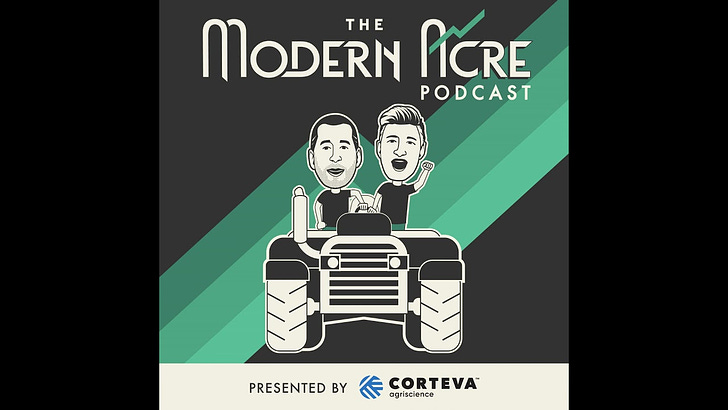Unlocking Demand for Regenerative
Successful regenerative farm-branded collabs are already working to tap into new demand for products from managed grazing systems. Killing crop insurance is the next step to unlocking growth at scale.
Today Prairie Routes Research hopes to build on the excellent work and insightful findings of “Unlocking Demand for Regenerative: A Crowdsourced Blueprint for Accelerating Consumer Demand for Regenerative Agriculture” by Ryan Pintado-Vertner, Founder & CEO of Smoketown, a U.S. marketing agency. Focusing on the economics of market development, let’s peer more deeply into:
The journey to here,
Key tools for leveraging growth today, and
The tasks to be mastered next.
Farmer-Led
Up until this point, the ‘farmer-led theory’ has accelerated regenerative agriculture adoption since it first became a thing 5-10 years ago, and purely through improved economics and agronomics. Inspired to change by the likes of Joel Salatin, James Rebanks, Gabe Brown, Will Harris and other farmers like them, early adopters gained access to knowledge, encouragement and instructions.
These big names in the regen movement represent smaller and more modest operations than Big Ag’s social media influencers and the old-school farm leaders on commodity boards. The philosophies between these two distinct types of ‘farmers,’ when it comes to engaging with consumers, are polar opposite too.
As shown here previously, the market access potential of these two different farm types is a widening gap too. Farms that manage livestock on their lands, and sell directly to customers, are already opening up new opportunities for consumers to vote with their dollars for regenerative agriculture and food, while the initiatives trying to make it easy for commodity grain farms first have zero to minimal impact.
It’s true that livestock are more complicated to farm than big grain, but the marketing opportunities on regen animal products are undeniably far superior.
At this point in the development of new markets for regenerative agriculture, it’s helpful to acknowledge that big brand, retail and farmer collabs aren’t ready yet to open up new consumer demand in the commodity grain segment. Fresh produce farms are a lot closer to monetizing the features of regen in their markets, and there are already solid examples like Pasturebird of new market penetration and growth for animal products made from livestock grazing a highly-diverse diet in a functioning ecosystem.
Definitions, Certifications, Regulation and Finance
The ‘electric car theory’ for scaling regen posits that definitions, certifications, regulation and finance will be needed for consumer-led purchasing patterns to be effective. Here too, the grazing systems segment within the regen category has already emerged with leading product lines.
With that definition established, content creators can develop marketing messaging to ‘convert the regen-curious into loyal customers and increase wallet share,’ which the report identifies as the best channel opportunity for growth. Working with animal products from grazed diverse pastures as the example, topics to promote can include:
What’s better about advanced grazing for the environment,
How the meat ends up tastier and more nutritious,
Why the color and texture differ from grocery store meat, and
Advantages around labor and animal welfare.
There may be multiple competing certifications in the world of regenerative and organic auditing, but Land to Market is leading today for similar reasons:
It was the first to launch on the backs of trusted science from pioneers of holistic management at the Savory Institute,
It was the first to attract major global brands,
It has solved for the missing middle and created end-to-end validated supply chain traceability to retail consumers in multiple global jurisdictions, and
With the likely exceptions of Non-GMO Project and certified organic, it appears to have the largest sales currently of any claim in the natural products retail space.
Land to Market labeling is only available to farms that have achieved a high enough score on the Savory Institute’s Ecological Outcome Verification (EOV), which measures many aspects of biodiversity restoration over multiple years. So far, only farms with livestock managed using advanced grazing systems are able to achieve a high enough EOV score to qualify for Land to Market access.
The regulations within regen markets are sometimes hard to spot because they’re brand new to agriculture, and they are minimally-invasive (as opposed to current maximally-invasive programs, further discussed below). In the 2 examples below, the bulk of new funding is available to farms moving the furthest away from standard rates of synthetic chemical applications on farmland.
Canada’s On Farm Climate Action Fund (OFCAF) is a funding program that reimburses rotational grazing infrastructure investments on farms, and could become a platform for federal government measurement, reporting and validation (MRV);
The U.S. GREET program scores carbon intensity (CI) offering government tax rebates on low-CI biofuel feedstocks, that have been grown with cover crops, manure, etc.
By contrast, crop insurance is an example of maximally-invasive government programming in agriculture. Incentivizing the status quo through historic calculations of risk premiums, the influence of government crop insurance seeps into every decision including in discussions with farm lenders.
In this week’s Modern Acre podcast, guest Joe Gardiner goes straight to the heart of the barriers to change inherent in government crop insurance programs. Listen right to the end to hear exactly how important it is to blow up these institutions to allow regenerative agriculture to scale - especially on cropland.
The final system needed to make regeneration as ubiquitous as electric cars is finance, and decoupling insurance from farm banking is arguably the biggest lever for change at our fingertips today. Bankers are integral in every type of farm business management system, they’re facing new securities regulations on climate-related financial disclosure, and can monetize the value of agricultural emissions reduction through differentiated borrowing rates.



